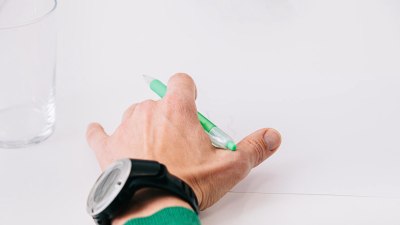Why Putting on Sunscreen Near Water Instantly Turns You Into a Human Slip ‘N Slide
Discover why applying sunscreen near water can make you slippery and how to choose the right one to avoid it.

This image was created with the assistance of Freepik
Sunscreen is an essential part of summer activities, especially when spending time near water. However, many people notice that applying sunscreen near water can turn them into what feels like a 'human Slip ‘N Slide.' The combination of sunscreen, water, and friction can create a slippery situation that not only makes it hard to stay upright but also diminishes the effectiveness of the sunscreen itself. In this article, we will explore the science behind this phenomenon, the types of sunscreen available, and tips to apply sunscreen effectively without becoming a slippery mess.
The Science of Sunscreen
Before delving deeper into why sunscreen can make you feel slippery, it’s important to understand what sunscreen is and how it works. Sunscreens are formulated with active ingredients that either absorb or reflect UV radiation from the sun. These ingredients can be chemical (like oxybenzone and avobenzone) or physical (like zinc oxide and titanium dioxide). When sunscreen is applied, these ingredients form a protective layer on the skin.
However, as sunscreen is designed to create a barrier, when introduced to water, its texture and performance can change. The water can cause the sunscreen to spread more easily across the skin, increasing the slippery feeling. Additionally, if the sunscreen is not water-resistant, water will wash it away or dilute its effectiveness altogether.
Why Water Makes You Slip
When you apply sunscreen near water, the combination of that sunscreen with the moisture can lead to a slick coating on your skin. Sunscreen ingredients are often emulsifiers and oils that, while effective for UV protection, can create a greasiness when combined with water. Here’s a breakdown of why this occurs:
1. Emulsifiers and Oils: Many sunscreens contain oils that can make the formula more slippery. When you’re at the beach or pool and the water gets involved, these oils can create a slick film.
2. Water Interaction: When water is applied or splashed onto skin with sunscreen, it can disrupt the uniform layer of sunscreen, making it slide off rather than sticking to the skin as intended.
3. Rubbing and Friction: As you apply sunscreen and then move around in a wet environment, the friction can mix with the water effects, leading to a slippery sensation.
Choosing the Right Sunscreen
To avoid the human Slip ‘N Slide feeling, it’s crucial to choose the right type of sunscreen. Here are important criteria when selecting your sunscreen to decrease the slippery aftermath:
1. Water-Resistant Formulas: Look for sunscreens labeled as water-resistant or very water-resistant. These products are designed to adhere better to wet skin and hold up against water exposure.
2. Gel or Spray Variants: Gels and spray sunscreens often absorb quicker and can provide a less greasy feel compared to creamy lotions. These forms are also less likely to slide off when wet.
3. Quick-Dry Formulations: Some brands offer quick-dry formulations that prevent excess moisture accumulation and help your sunscreen set quickly, reducing the slippery sensation.
How to Apply Sunscreen Properly
Application technique is just as important as the sunscreen itself. Here are expert tips to apply sunscreen effectively, especially when near water:
1. Apply Before Water Activities: Always apply sunscreen at least 15 to 30 minutes before heading into the water or sun. This allows the sunscreen time to absorb and adhere properly to your skin.
2. Use a Generous Amount: Most people use too little sunscreen. A recommended amount is about one ounce (a shot glass full) for full-body coverage. Ensure even coverage to avoid slippery spots.
3. Reapply Regularly: Reapply sunscreen every two hours or immediately after swimming or sweating, even with water-resistant options. This keeps the protective barrier intact.
4. Wear a Hat and Protective Clothing: While sunscreen is important, additional protective measures can help reduce your need for chemicals and enhance sun safety. A wide-brimmed hat or UV-protected clothing can add to your safety.
Common Mistakes to Avoid
Even with the best intentions, there are common mistakes people make when it comes to applying sunscreen. Avoid the following slip-ups:
1. Neglecting the Reapplication: Forgetting to reapply sunscreen, especially after swimming or sweating, increases the risk of slips and sunburn. Always stick to the reapplication schedule.
2. Rushing the Application: Applying sunscreen in a hurry, especially near water, might lead to uneven distribution. Take your time to ensure complete coverage for maximum protection.
3. Skipping Hard-To-Reach Areas: Areas like the back, ears, and feet are often neglected during application. Always ensure those areas are well covered to prevent burns and slipping.
4. Applying on Wet Skin: Applying sunscreen on wet skin can lead to a greasy mess. Try to towel off before sunscreen application for better adhesion.
What to Do If You Slip
If you’ve become a human Slip ‘N Slide due to using the wrong sunscreen or improper application, there are a few things you can do:
1. Balance Yourself: Try to find a stable surface to regain your footing, whether it’s a non-slip surface by the pool or the shore.
2. Avoid Abrupt Movements: Move slowly to prevent falls or accidents—quick jerks might cause you to slip further.
3. Seek Assistance: If you feel unstable, don’t hesitate to ask someone for help. It’s better to be safe rather than risk injury from falling.
Maintaining Skin Health with Sunscreen
While avoiding slip-ups is critical, sunscreen’s primary role is to protect your skin from harmful UV rays. Here are further benefits:
1. Prevention of Sunburn: Sunscreen protects against painful sunburns that can spoil a day at the beach.
2. Reduced Risk of Skin Cancer: Regular sunscreen application lowers the risk of developing skin cancer, especially in high-exposure areas like the face and back.
3. Slowing Down Aging: Continuous UV exposure can accelerate skin aging. Sunscreen can help maintain youthful skin by preventing damage from UV rays.
Conclusion
The slippery sensation caused by applying sunscreen near water is a result of the interaction between sunscreen ingredients, water, and movement. By choosing the right sunscreen, applying it correctly, and practicing sun safety, you can enjoy your time by the water without the slip-and-slide experience. Understand the importance of sunscreen not only in preventing slips but also for skin health to make your summer days both safe and enjoyable!











